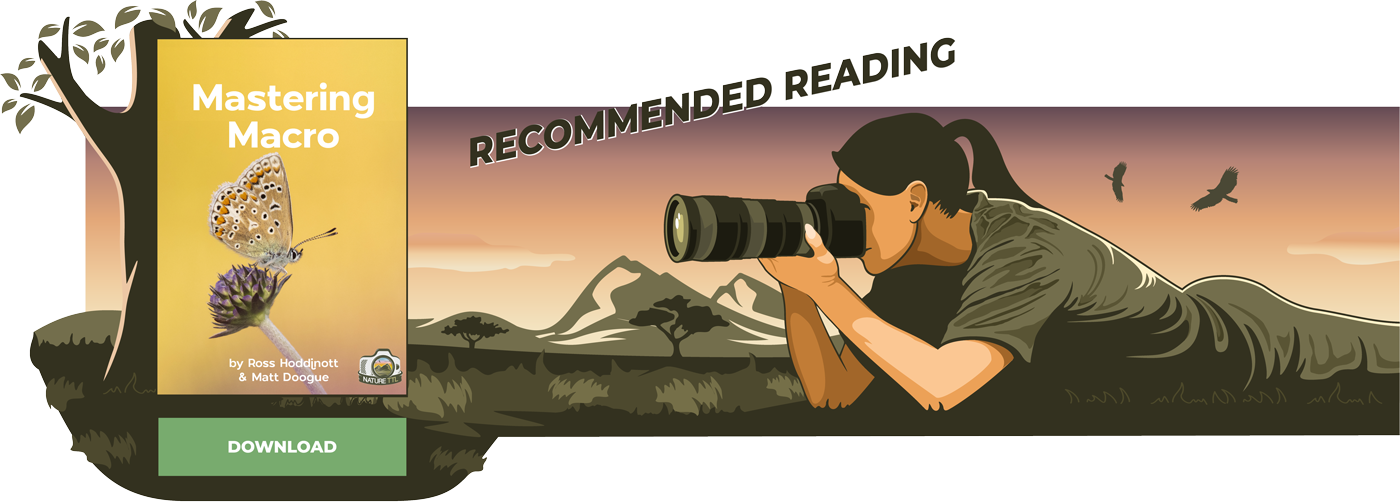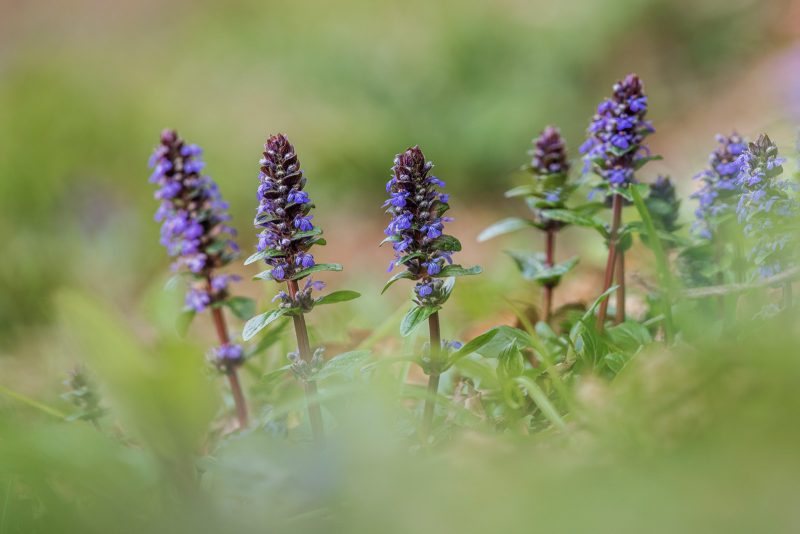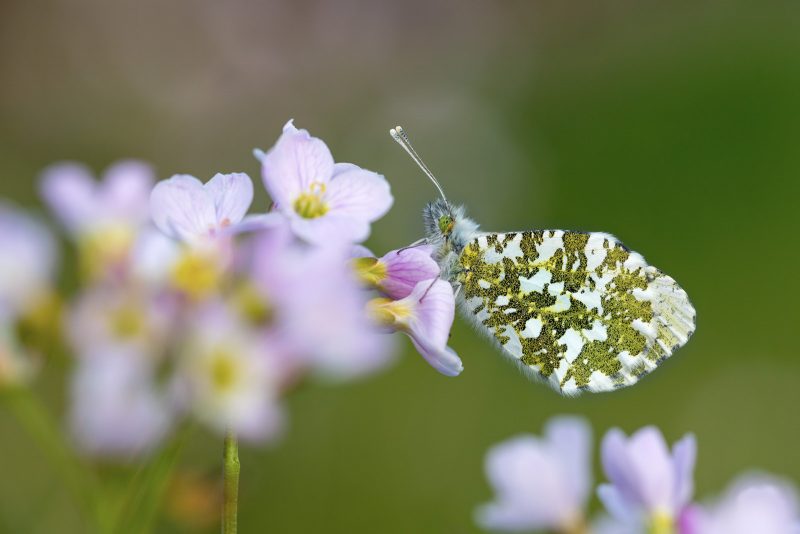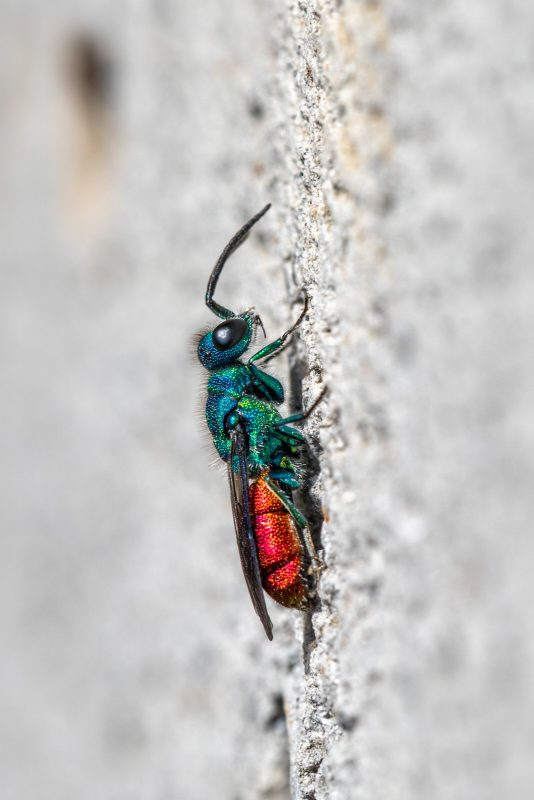How to Attract Insects to Your Garden for Photography

Regardless of how big our gardens are, or even if we can only find space for a few window boxes or planters, we can all do something to attract insects. In fact, given their declining numbers in the wider countryside over the last few decades, I would argue that we have a responsibility to do what we can to support them. Insects are important in their own right, but they also support a complex food chain – so without them the world would be a much less rich and diverse place.
From the photographer’s point of view, there is vast potential to capture images of insects. From straight portraits to behavioural shots, the number of subjects available is huge. The more time I have spent photographing insects, the more I realise just how fascinating they are. As I have attracted more insects into my garden, I have felt a tangible sense of satisfaction – but I know I have much more to do.


In this article I will suggest a few steps that can be taken to invite insects into your garden and, through my images, I hope you will see some of the photographic rewards.
Further reading: How to Attract Birds to Your Garden for Photography
The species to target
There are a huge number of insects in the UK; according to the Woodland Trust we have approximately 27,000 different species. Between hatching from an egg and reaching adulthood, the requirements in terms of food and shelter of each species can vary dramatically.
Trying to provide food and accommodation for all of them in our gardens would be futile. But, looking at it another way, every niche we offer will be occupied by insects. So the most productive approach to supporting insects is likely to be a general one in which we aim to provide a diverse range of habitats and a richness of plant species, but there are some specific cases for certain species we can target and I will highlight some of those later.
Understanding the needs of insects
To illustrate the variety of insect types and their requirements, I will look briefly at a few family groups that might be of most interest to us as photographers and gardeners.
1. Butterflies
As adults they require nectar, so we can support a wide range of species by increasing the number of appropriate flowers we have in our gardens. They will also feed from decaying fruit, so we can provide food for them artificially. Some species hibernate in their adult form, and so they need safe places to hide away from the worst of the winter weather.
All species have specific plants, or sets of plants, on which their caterpillars feed, so to attract them to stay and breed we need to research and understand their full life-cycle, then grow the right plants.
Read more: How to Photograph Butterflies

2. Moths
Are similar to butterflies, but generally fly by night. In contrast to butterflies, there are many moths which do not feed at all in their adult form and so having the appropriate food plants for their larvae to feed on is even more important.
Those moths which do feed as adults are important pollinators and we can attract them by growing night-scented varieties of flowers. The intricacy of detail on the wings of moths makes them a superb subject for photography, and because many species can easily be trapped in live-traps we can all while away a few happy hours capturing them on camera.
Read more: How to Photograph Moths

3. Bees
Bees require nectar and pollen throughout the spring and summer, so we need to plan our planting to enable this. Some species make large nests where their eggs and larvae are supported by an army of workers, whilst others are solitary species which dig mines or occupy holes in which a single female will lay her eggs and deposit food for her growing larvae.

4. Dragonflies
They need water. Their eggs are laid in water and their larvae live underwater for the first year or two. After that, they emerge as adult flying insects which then hunt other insects for food. Photographically, dragonflies and damselflies offer wonderful opportunities for imagery from capturing them in flight to showing the wonderful transformation they go through from larva to flying insect.

I have barely scratched the surface of the insect groups available but, with this diversity of subject matter and its requirements in mind, let’s have a look at some more specific details of things we can do to support and attract them.
Providing water
We can all attract dragonflies and damselflies by digging a garden pond. Incidentally, a garden pond will also attract many other insect types – including some on the surface such as pond-skaters and whirligig beetles, and some beneath the surface like the water boatman, water stick insect, and diving beetles.
To attract dragonflies, we need a pond which is sheltered from the wind and in a sunny spot. It should be made to include varying depths of up to at least two feet deep, but with some shallow shelves and margins. Around its edge we need to have plants which offer shelter and we should aim to have longer vegetation to provide cover for various creatures.
Nearby log and rock piles will offer a cool, damp spot for insects as well as for amphibians to hide underneath. In the pond we should aim to grow a range of plants, such as water lilies, which cover about two-thirds of the water surface in summer. This prevents the water from becoming too warm and helps to keep it oxygenated.

When choosing plants (for those of us in the UK), avoid non-natives which can be invasive. Also, don’t take plants from other people unless you know for certain that they don’t harbour non-natives. In deeper water, try white water lily and fringed water lily. Around the edge, and growing into the water, I like bogbean (a lovely flower to photograph), amphibious bistort, marsh cinquefoil and water crowfoot.
Around the damp edges of the pond try ragged robin, spearwort, purple loosestrife, marsh marigold, water forget-me-not, water mint and wild angelica, all of which offer nectar for insects as well as being food plants for various moth larvae. If your pond is made using a liner, avoid bulrushes because their roots can penetrate the liner.
Providing food
1. Nectar and pollen
It is generally better to use native plants to attract wildlife because they are more likely to provide a wider range of facilities for our native wildlife species.
For example, ivy is an all-round provider for insects (and birds). Its flowers occur in late summer or autumn, providing food for a wide range of butterflies when there is little other nectar around. One type of bee – the ivy mining bee – is almost completely dependent on it for food. The holly blue butterfly might well lay its eggs on holly in the spring, but its second generation of caterpillars depends on ivy leaves for food. The thick, twisting growth of ivy stems and its evergreen leaves offer an ideal space for insects such as ladybird, green lacewing, and some butterflies to hibernate through the winter. Let’s not forget that ivy berries are also eaten by birds and that birds often nest in it.

There aren’t any non-native plants which can offer such a wide-ranging service to our insects. That said, I won’t dismiss non-natives completely because there are many which provide an excellent source of nectar, and for that reason alone deserve a place in our gardens if we have space. But we should all avoid overly-showy flowers that provide little or no nectar and pollen. So don’t plant ‘double’ flower varieties which are bred for colour and have little or no pollen.

Our aim should be to provide nectar throughout the year. If you have a small garden and would find this difficult to achieve, why not get together with neighbours and try to cover the year between you? If you find a month in which you don’t have any flowers in your garden, simply head down to the garden centre and see which flowers are attracting insects.
Here is a list of possible (not exhaustive) plants and shrubs to use through the seasons:
- Winter: hellebore, crocus, winter aconite, winter flowering heathers
- Spring: ceanothus, rosemary, perennial cornflower, bugle, foxglove, pyracantha, apple and wild cherry trees.
- Summer: Buddleja davidii, knapweed, comfrey, mint, teasel, privet, fuchsia, lavender, honeysuckle, field scabious, mullein, tree lupin, mallow, red valerian, borage, climbing jasmine, elecampane
- Autumn: sedum, Verbena bonariensis, ivy, autumn flowering heathers

2. Food for caterpillars
As well as providing nectar and pollen, we should try to provide food plants of caterpillars to allow insects to complete their whole life cycles in our gardens. I will list a few we could consider for this purpose, along with the species they support. I have chosen these species in part because I regard them as being photogenic, but also because there is a fair chance we might see them in a wide range of gardens.
- Various long grasses for brown butterflies;
- Lady’s smock, honesty, and garlic mustard for orange-tip butterflies;
- Ivy and holly for holly blue butterflies;
- Bird’s foot trefoil for a wide range of species including common blue butterflies and burnet moths;
- Nettles, if you have space and the desire, for large butterflies including small tortoiseshells and peacocks;
- Alder buckthorn for brimstone butterflies;
- Privet for privet hawkmoth;
- Fuchsia and willowherbs for elephant hawkmoth.




Providing refuge and shelter in your garden
Insects need places of refuge. Some need to find shelter from the sun to prevent them from drying out, whilst others need to find a safe place to roost overnight. Some also need to hibernate.
Basically, the rule here is not to be too tidy in your garden. Leave some piles of leaf litter through the winter; build rock and log piles close to areas of longer vegetation where insects might conceal themselves. Grow some evergreens such as ivy, holly, small conifers and pyracantha which provide protection in the winter, and grow climbing plants such as honeysuckle, ivy, clematis up the walls of your shed, garage or house with different aspects to provide shelter for insects from various wind directions.
Think carefully before undertaking any destructive work. So, if you have an area of long grass, don’t cut it down until you are sure that it is safe to do so. There is little point in providing a refuge for insects to hibernate in and then cutting it down halfway through the winter! If you are in doubt, cut half of it and leave the other half until the spring. By doing this you will create a mosaic of different habitats which will support a wider range of insect life. This strategy should be used in all our gardening jobs if possible.

In spring and summer insects will be looking for a different form of refuge: somewhere to lay their eggs. Many will use log piles and some will utilise holes in the ground. Providing a bare patch of sandy or stony ground on a south-facing slope can be productive for mining bees and wasps, but the best single thing we can do is to build an insect house. A couple of years ago I was given a few thermal blocks into which I drilled holes of various sizes (about 8mm diameter). I erected them on a south-facing wall of our shed and, within a few weeks in spring, we had our first visitors: mason bees.



The mason bees laid eggs and filled the cells with pollen before capping them with mud. Then came the leaf-cutter bees, which do the same but with leaves instead of mud. Amongst all this there were various forms of wasp: some parasitic, some cuckoos, and some predatory – all active around these simple thermal blocks.
This year I built another insect house with a selection of brick, block, wood, and bamboo canes and we have had many more bees visiting.
In conclusion
I haven’t mentioned much about the techniques for photographing insects. The subject would be too large for this article. But I have tried to include a good range of strategies for getting the insects to visit our gardens and in so-doing we have the opportunity to observe them at close quarters.
As soon as you spend time amongst these creatures, you will start to see opportunities to capture them with your camera. At that point you metamorphose from wildlife gardener to wildlife photographer, and get your camera out. But, believe me, in wildlife gardening you might find a hobby which competes for your time with photography… and that might not be such a bad thing!





